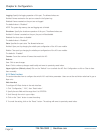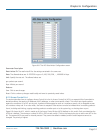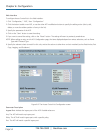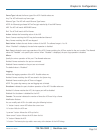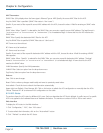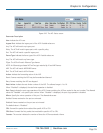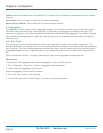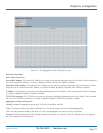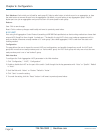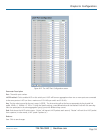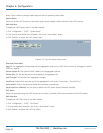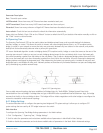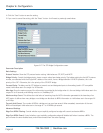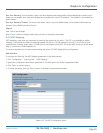
724-746-5500 | blackbox.com
Page 58
LGB5028A User‘s Manual
724-746-5500 | blackbox.com
Chapter 6: Configuration
Port Members: Each switch port is listed for each group ID. Select a radio button to include a port in an aggregation, or clear
the radio button to remove the port from the aggregation. By default, no ports belong to any aggregation group. Only full-
duplex ports can join an aggregation and ports must be in the same speed in each group.
Buttons:
Save: Click to save changes.
Reset: Click to undo any changes made locally and revert to previously saved values.
6.3.2 LACP
Ports using Link Aggregation Control Protocol (according to IEEE 802.3ad specification) as their trunking method can choose their
unique LACP GroupID to form a logical “trunked port.” The benefit of using LACP is that a port makes an agreement with its
peer port before it becomes a ready member of a “trunk group” (also called aggregator). LACP is safer than the static trunk
trunking method.
Configuration
This page allows the user to inspect the current LACP port configurations, and possibly change them as well. An LACP trunk
group with more than one ready member-ports is a “real trunked” group. An LACP trunk group with only one or less than one
ready member-ports is not a “real trunked” group.
Web Interface
To configure the Trunk Aggregation LACP parameters in the Web interface:
1. Click “Configuration,” “LACP,” “Configuration.”
2. Enable or disable the LACP on the port of the switch. Scroll thorugh the the key parameters with “Auto” or “Specific.” Default
is “Auto.”
3. Scroll the Role with “Active” or “Passive.” Default is “Active.”
4. Click “Save” to save the setting.
5. To cancel the setting, click the “Reset” button. It will revert to previously saved values.



